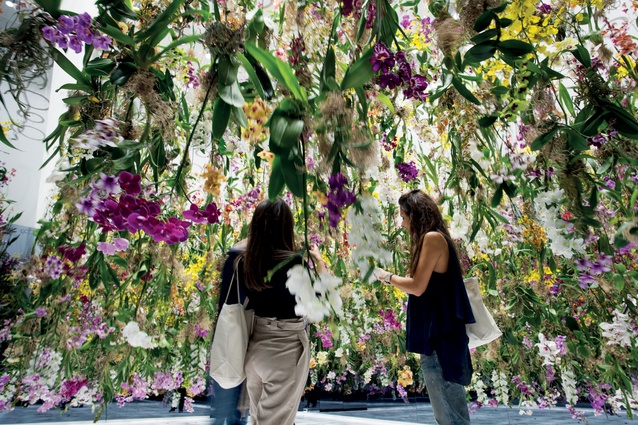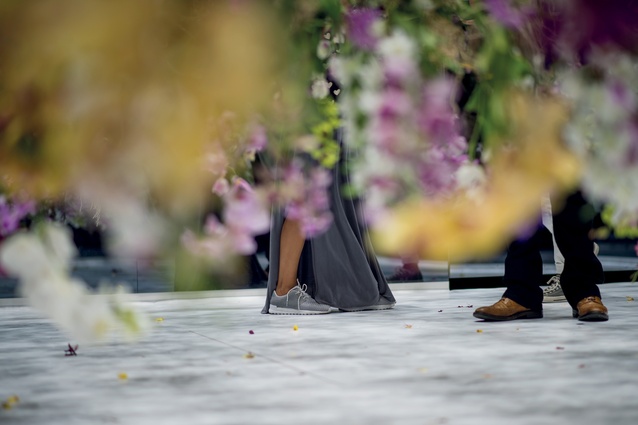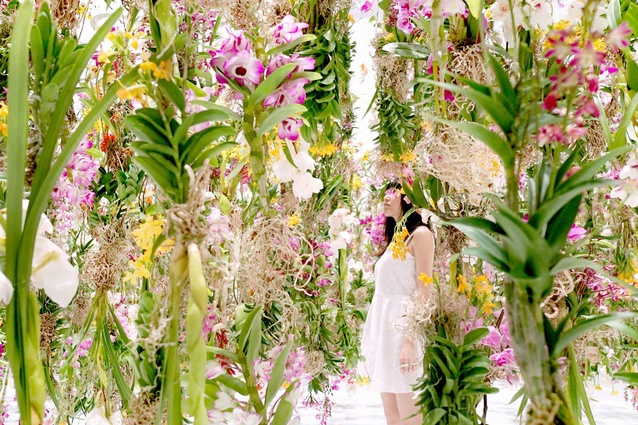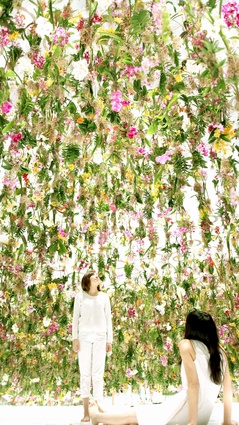Now and Zen
Takashi Kudo, one of the members of Japanese digital art collective TeamLab, is reluctant to divulge the technology behind their piece Floating Flower Garden. “The idea is to experience it,” says Takashi, adding that his team would prefer the piece to remain “like magic”.
There is an element of enchantment in this multi-sensory artwork, which involves entering a large, white room filled with 400 brightly coloured, living orchids, suspended at varying heights. As an atmospheric soundscape plays, people are enveloped by the fragrant flowers, which float up and down in relation to where people are in the space.
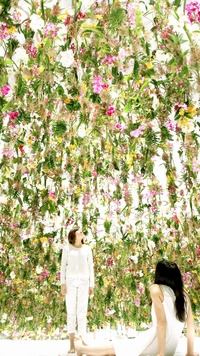
To go into too much detail about the sophisticated algorithms would detract from the dream-like immersion. Part of the rationale for this ‘magic’ is what TeamLab calls their “100% positive” approach to art. In the Internet age, the collective believes art’s role has changed: it no longer needs to be the critical voice that was necessary before online debate and opinion became staples of our daily lives. For TeamLab, digital art offers the opportunity to reinstate a connection between imagination and the physical world, articulated through the fantasy universes that they create.
It might be 100% positive, but Floating Flower Garden has a social agenda. Exploring the interaction between humans and nature, the installation traverses the idea of coexistence, presenting an almost utopian diversity without the competitive aspect of survival between humans and nature.
Takashi explains: “the individual elements of the artwork are linked as a network by the digital domain and therefore behave as a group. And yet each element remains physically free. The boundaries of physical space, and ultimately the border between the artwork and space, disappear.”
This is reinforced by the significance of proximity in the artwork, as the flowers react to the movements of the visitors and vice versa. When immersed in the space “you are looking at the flowers, but they are also looking at you,” says Takashi.
These blurred lines are a nod to traditional Japanese culture and the Zen garden. Takashi explains how in Japanese culture the line between nature and artifice is not as clear as in the Western world: even celebrated moments of natural beauty like the cherry blossom season can be partially attributed to human intervention, such as planting and cultivation.
Likewise, the Zen garden is a natural environment that does not seek to hide the fact it has been groomed and styled. Zen philosophy also revolves around the idea of questions and answers, or rather questions to which the answers are not given, but to which each person must find their own responses, provoking reflection and understanding.
This is in essence what Floating Flower Garden also offers, in a contemporary setting: a landscape that exists between dream and reality, inviting reflection on fundamentally human issues.

